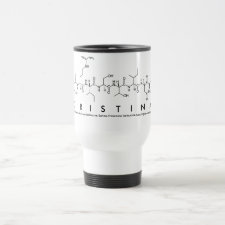
Authors: Baggiani C, Giraudi G, Giovannoli C, Tozzi C, Anfossi L
Article Title: Adsorption isotherms of a molecular imprinted polymer prepared in the presence of a polymerisable template - Indirect evidence of the formation of template clusters in the binding site.
Publication date: 2004
Journal: Analytica Chimica Acta
Volume: 504
Issue: (1)
Page numbers: 43-52.
DOI: 10.1016/S0003-2670(03)00671-8
Abstract: The current opinion about molecular imprinted polymers (MIPs) is that their molecular recognition properties are due to the presence of nanocavities formed during a polymerization process developed in the presence of a template molecule. According to this principle, the shape of these nanocavities is complementary to that of the template and non-covalent interactions are established between the binding site and a single template molecule. Nevertheless, there are some experimental indications that the real molecular recognition mechanism involves clusters of template molecules being packed into the binding site. Recently, it has been proposed that template molecules covalently linked to the binding site can act as nucleation points, enhancing the formation of these molecular clusters. We have tested this hypothesis by studying the adsorption isotherms of polymers prepared by imprinting them with 2,4,5-trichlorophenoxyacetic acid (2,4,5-T). Three different polymers were considered: P0, prepared without the template, P1, whose template was represented by 2,4,5-T molecules, and P2, whose template was 1/3 constituted by the polymerisable 2-(2,4,5-trichlorophenoxyacetoxy)- ethylmethacrylate (2,4,5-TEMA) and 2/3 by 2,4,5-T The polymers were prepared by thermoinduced polymerization of template mixtures, 4-vinylpyridine and ethylene dimethacrylate. The crushed polymers were packed into HPLC columns and frontal chromatographic runs were performed by eluting the columns with a mobile phase containing variable amounts of 2,4,5-T. The experimental adsorption isotherms were fitted by using several isotherm models, and the Freundlich-Langmuir model was found to give the best fitting in terms of F-test. All the models considered showed a significant difference between the affinity constant values measured for the polymer P1 and P2, with a higher value for the polymer P2 (for Freundlich-Langmuir model: polymer P1, k = (2.00 +/- 0.43) x 10(4) M-1; polymer P2, k =(1.93 +/- 0.0535) x 10(5) M-1; ratio P2/P1, 9.65 +/- 2.09). Such experimental results support the hypothesis that a polymer prepared with a limited amount of template covalently attached to the binding site shows an increased affinity for the template itself. (C) 2003 Elsevier B.V. All rights reserved



Join the Society for Molecular Imprinting

New items RSS feed
Sign-up for e-mail updates:
Choose between receiving an occasional newsletter or more frequent e-mail alerts.
Click here to go to the sign-up page.
Is your name elemental or peptidic? Enter your name and find out by clicking either of the buttons below!
Other products you may like:
 MIPdatabase
MIPdatabase









